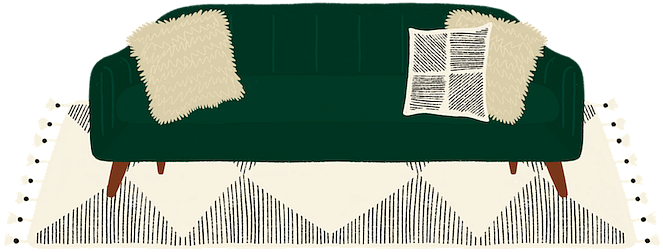Obsessive-Compulsive Disorder (OCD) affects millions of people worldwide, manifesting in various ways. While many associate OCD with excessive hand-washing or checking locked doors, the reality is far more complex. OCD subtypes represent different themes around which a person’s obsessions and compulsions revolve. Understanding these subtypes can help individuals recognize their symptoms and seek appropriate treatment. Let’s explore the 18 different OCD subtypes and their unique characteristics.

Common OCD Subtypes
- Checking OCD: This subtype involves repetitive checking behaviors, such as ensuring doors are locked or appliances are turned off. People with this OCD subtype often fear that something terrible will happen if they don’t check repeatedly.
- Contamination OCD: Individuals with this subtype experience intense fears of germs, dirt, or contamination. They may engage in excessive cleaning or avoid touching objects they perceive as “contaminated.”
- Counting OCD: This OCD subtype involves compulsively counting objects or performing actions a specific number of times. People might believe that counting in certain patterns will prevent harm or bring good luck.
- “Just Right” OCD: Those with this subtype feel an overwhelming need for things to be “just right.” They might repeatedly arrange objects or perform actions until they feel perfectly satisfied.
- Harm OCD: This subtype centers on intrusive thoughts about harming oneself or others. Despite having no intention to act on these thoughts, individuals experience significant distress and may avoid situations that trigger these obsessions.
Less Common Subtypes
- Existential OCD: People with this OCD subtype obsess over philosophical questions about existence, reality, or the meaning of life. These thoughts can become all-consuming and lead to compulsive research or seeking reassurance.
- False Memory OCD: This subtype involves obsessing over the accuracy of memories. Individuals may constantly replay events in their minds, trying to determine if their recollections are true or false.
- Hoarding OCD: While hoarding is its own disorder, some people with OCD experience hoarding symptoms due to fears of discarding items or feeling incomplete without certain objects.
- Magical Thinking OCD: This subtype involves believing that one’s thoughts or actions can directly influence unrelated events. People might engage in rituals or avoid certain thoughts to prevent perceived catastrophes.
- Relationship OCD: Individuals with this OCD subtype experience persistent doubts about their relationships. They may constantly question their feelings or their partner’s feelings, seeking reassurance or analyzing past interactions.
Specialized OCD Subtypes
- Pedophilia OCD (POCD): This distressing subtype involves intrusive thoughts about sexually harming children. People with POCD find these thoughts abhorrent and may avoid situations involving children out of fear.
- Perinatal OCD: This OCD subtype affects pregnant women or new mothers, causing intense fears about harming their baby or obsessions about the baby’s safety.
- Postpartum OCD: Similar to perinatal OCD, this subtype emerges after childbirth. New parents may experience intrusive thoughts about harming their child or excessive worries about the child’s well-being.
- Purely Obsessional OCD (Pure O): This subtype involves distressing intrusive thoughts without visible compulsions. However, individuals often engage in mental rituals to neutralize their obsessions.
- Real Events OCD: People with this OCD subtype obsess over past events, often exaggerating their significance or potential consequences. They may engage in mental review or seeking reassurance about these events.
- Scrupulosity (Religious) OCD: This subtype centers on religious or moral obsessions. Individuals may fear committing sins or obsess over religious rituals, often engaging in excessive prayer or confession.
- Sexual Orientation OCD: Also known as homosexual OCD, this subtype involves persistent doubts about one’s sexual orientation. People may constantly analyze their attractions or avoid situations that trigger these doubts.
- Suicidal OCD: This distressing subtype involves intrusive thoughts about suicide, without actual suicidal intent. People may avoid triggers or engage in mental rituals to neutralize these thoughts.
Understanding OCD Subtypes and Their Impact
OCD subtypes can significantly impact a person’s daily life, relationships, and overall well-being. It’s crucial to recognize that experiencing symptoms from multiple subtypes is common. OCD often shifts and adapts, causing individuals to experience various obsessions and compulsions over time.
The severity of OCD can vary greatly between individuals and even within the same person over time. Some may experience mild symptoms that cause minor inconveniences, while others may find their OCD debilitating, interfering with work, school, or personal relationships.
It’s important to note that having intrusive thoughts doesn’t necessarily mean you have OCD. The key difference lies in the level of distress these thoughts cause and the extent to which they disrupt daily life.
Seeking Help for OCD
If you believe you’re experiencing symptoms of any OCD subtype, it’s crucial to seek help from a mental health professional. Many people with OCD feel ashamed or embarrassed about their symptoms, particularly those with taboo obsessions like POCD or harm OCD. Remember, having these thoughts doesn’t reflect your character or desires.
The gold standard treatment for all OCD subtypes is Exposure and Response Prevention (ERP) therapy. This form of cognitive-behavioral therapy helps individuals confront their fears gradually while learning to resist compulsive behaviors. ERP can be challenging, but it’s highly effective in reducing OCD symptoms across all subtypes.
In addition to ERP, some individuals may benefit from medication, particularly selective serotonin reuptake inhibitors (SSRIs). A combination of therapy and medication often provides the best results.
Next Steps for Your OCD
Understanding the various OCD subtypes can help individuals recognize their symptoms and seek appropriate treatment. While OCD can be a challenging condition, it’s important to remember that effective treatments are available. With proper support and therapy, people with all OCD subtypes can learn to manage their symptoms and lead fulfilling lives.
If you’re struggling with OCD, we specialize in working with OCD and we would love to work with you. Remember, you’re not alone in this journey, and recovery is possible, regardless of which OCD subtype you may be experiencing.





Leave a Reply